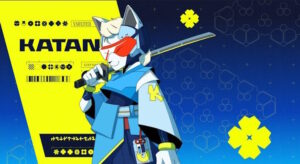What is Ethereum? A Beginner’s Guide

What is Ethereum? A Beginner’s Guide on The Crypto Post
Ethereum is much more than just a cryptocurrency—it’s a decentralized computing platform that powers a wide variety of applications, from decentralized finance (DeFi) to gaming. Launched in 2015, Ethereum is the second-largest cryptocurrency by market cap, just behind Bitcoin. But unlike Bitcoin, Ethereum wasn’t designed just to be digital money; its real innovation lies in its ability to serve as a decentralized global computing platform.
What Can Ethereum Do?
The Ethereum blockchain supports the creation of decentralized applications (dApps) and services. Some of the most popular applications include:
- Smart Contracts: These are self-executing contracts that automatically fulfill agreements when certain conditions are met, without needing a middleman like a bank or lawyer.
- DeFi (Decentralized Finance): These are financial services, like lending and trading, built on blockchain technology. DeFi apps on Ethereum remove the need for traditional banks or financial intermediaries.
- Games and NFTs: Many of the popular non-fungible token (NFT) platforms and blockchain-based games operate on the Ethereum blockchain.
According to the Ethereum Foundation, “Ethereum can be used to codify, decentralize, secure, and trade just about anything.” The possibilities are only limited by developers’ creativity.
How Does Ethereum Work?
Ethereum’s blockchain runs on a decentralized global network of computers that work together to verify transactions and run smart contracts. The heart of this system is the Ethereum Virtual Machine (EVM), a kind of “world computer” that runs the code for decentralized applications (dApps).
Just like Bitcoin’s blockchain, Ethereum uses blockchain technology to ensure transparency and security. However, while Bitcoin is primarily focused on tracking ownership of digital currency, Ethereum’s blockchain is more flexible. It not only keeps track of who owns ETH (the native cryptocurrency of Ethereum) but also runs programs (smart contracts) that automate various processes.
Smart contracts are a game-changer because they allow two parties to enter into an agreement without needing to trust each other or involve a middleman. Once the conditions of the contract are met, it automatically executes.
What’s the Difference Between Ethereum, Ether, and ETH?
- Ethereum: The platform itself, a decentralized computing network.
- Ether (ETH): The native cryptocurrency of Ethereum. ETH is used to pay transaction fees and power applications on the Ethereum blockchain.
- Gas: The fees paid in ETH to execute transactions or smart contracts on the network. These fees are essential for running applications and maintaining the network’s security.
If Bitcoin is considered “digital gold,” Ether can be viewed as “digital oil” because it powers the entire Ethereum ecosystem.
Ethereum 2.0: A Major Upgrade
In September 2022, Ethereum underwent a massive upgrade known as Ethereum 2.0, which transitioned the network from a Proof of Work (PoW) system to a more energy-efficient Proof of Stake (PoS) system. This upgrade, also known as “The Merge,” aimed to improve Ethereum’s scalability, security, and environmental impact.
With PoS, network participants (validators) secure the network by staking their ETH instead of using energy-intensive mining rigs. This makes Ethereum more sustainable and capable of handling more transactions.
Staking and Earning Rewards
In the new Proof of Stake system, validators earn rewards by staking their ETH, contributing to network security, and verifying transactions. Validators are selected based on the amount of ETH they have staked, and the length of time they’ve held their stake.
By participating in staking, validators earn rewards, which are distributed in ETH, providing a way to earn passive income while supporting the network.
What Is Ethereum Used For?
Ethereum’s applications are vast, but here are some of its most popular uses:
- DeFi (Decentralized Finance): Borrow, lend, trade, and earn interest without the need for banks.
- NFTs (Non-Fungible Tokens): Own unique digital assets, such as art, collectibles, and in-game items.
- Smart Contracts: Automate agreements and transactions without intermediaries.
- dApps: Run decentralized applications that range from games to supply chain management tools.
How to Buy Ethereum
Buying Ethereum is easy through online exchanges like Coinbase, Binance, or Kraken. Once you purchase ETH, you’ll need a crypto wallet to store it. Wallets can be:
- Hot Wallets: Online, easily accessible, but less secure.
- Cold Wallets: Offline, highly secure, recommended for long-term storage.
When you hold Ethereum, you are given two keys:
- Public Key: Similar to your email address, this is where people send ETH.
- Private Key: Similar to a password, it’s essential to keep this safe. If lost, you’ll lose access to your ETH.
Final Thoughts
Ethereum isn’t just a cryptocurrency—it’s a vast, decentralized platform that enables innovative technologies like smart contracts and DeFi. With Ethereum 2.0 now live, the network is faster, more secure, and more environmentally friendly than ever before. Whether you’re looking to invest in ETH or explore its decentralized applications, Ethereum is transforming how we think about the internet and finance.
Stay tuned to The Crypto Post for more insights and guides on Ethereum and other cryptocurrencies!









